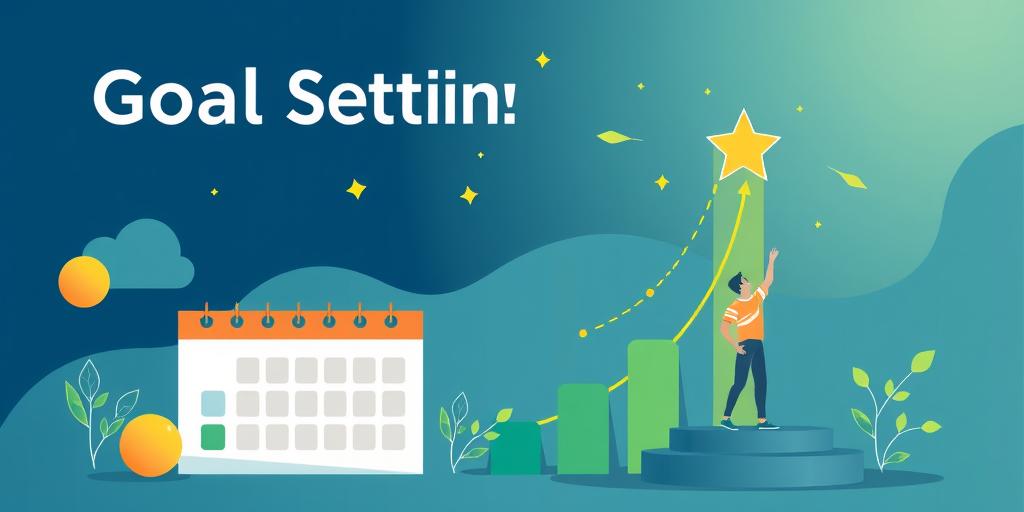Goal Setting Strategies That Actually Work (2000-2025)
Setting goals is a fundamental aspect of personal and professional development. However, many individuals struggle to set goals that are both achievable and meaningful. This guide explores effective goal-setting strategies, refined and validated from 2000 to 2025, providing you with actionable techniques to enhance your success.
The Importance of Goal Setting
Goal setting provides direction, motivation, and a clear sense of purpose. By setting specific, measurable, achievable, relevant, and time-bound (SMART) goals, you can transform vague aspirations into concrete plans. Moreover, effective goal setting enables you to:
- Increase Productivity: Focused efforts lead to better results.
- Enhance Motivation: Clear targets boost enthusiasm and commitment.
- Improve Decision-Making: Goals serve as a compass for choices.
- Boost Self-Confidence: Achieving milestones reinforces positive self-perception.
Core Goal-Setting Strategies
1. SMART Goals
The SMART framework remains a cornerstone of effective goal setting. Each element ensures your goals are well-defined and attainable:
- Specific: Define exactly what you want to achieve. Instead of "get in better shape," try "lose 10 pounds."
- Measurable: Establish criteria for measuring progress. Use metrics like weight, revenue, or project completion rates.
- Achievable: Set realistic goals that stretch your abilities without being impossible. Consider available resources and constraints.
- Relevant: Align goals with your overall objectives and values. Ensure they contribute to your broader vision.
- Time-Bound: Assign a deadline for completion. This creates a sense of urgency and keeps you on track.
2. The OKR Framework
Objectives and Key Results (OKRs) is a popular goal-setting framework used by many successful organizations. It involves setting ambitious objectives and defining measurable key results to track progress.
- Objective: A qualitative description of what you want to achieve (e.g., "Become a market leader in sustainable products").
- Key Results: Quantitative metrics that measure progress toward the objective (e.g., "Increase market share by 15%", "Launch three new eco-friendly products").
3. Visualisation and Affirmation
Visualisation involves mentally rehearsing the achievement of your goals. By vividly imagining success, you reinforce positive beliefs and increase your likelihood of taking necessary actions.
Affirmations are positive statements that reinforce your ability to achieve your goals. Regularly repeating affirmations can help overcome self-doubt and build confidence. Examples include:
- "I am capable of achieving my goals."
- "I am making progress every day."
- "I am committed to my success."
4. Breaking Down Goals
Large, complex goals can be overwhelming. Break them down into smaller, more manageable tasks. This approach makes the overall goal seem less daunting and provides a clear roadmap for progress.
- Identify Sub-Tasks: List all the individual steps required to achieve the goal.
- Prioritize Tasks: Determine which tasks are most critical and should be tackled first.
- Assign Deadlines: Set mini-deadlines for each sub-task to maintain momentum.
5. Regular Review and Adjustment
Goal setting is not a one-time event but an ongoing process. Regularly review your progress and make adjustments as needed. Market trends, unexpected challenges, or new opportunities may require you to modify your goals or strategies.
- Weekly Reviews: Assess progress, identify obstacles, and make minor adjustments.
- Monthly Reviews: Evaluate overall performance and revise strategies if necessary.
- Quarterly Reviews: Conduct a comprehensive review to ensure goals remain aligned with your long-term objectives.
Advanced Techniques
1. The WOOP Method
The WOOP (Wish, Outcome, Obstacle, Plan) method is a science-backed technique that helps you identify and overcome obstacles preventing you from achieving your goals.
- Wish: Define your goal or aspiration.
- Outcome: Visualize the best possible outcome of achieving your wish.
- Obstacle: Identify the internal obstacles that might hinder your progress.
- Plan: Create "if-then" plans to address these obstacles.
2. Implementation Intentions
Implementation intentions are specific plans that link a situation with a behavior. By creating "if-then" statements, you increase the likelihood of following through on your intentions.
- "If I feel overwhelmed, then I will take a 15-minute break to meditate."
- "If I encounter a setback, then I will analyze what went wrong and adjust my approach."
3. Accountability Partners
Sharing your goals with an accountability partner can significantly increase your chances of success. An accountability partner provides support, encouragement, and constructive feedback.
- Choose Wisely: Select someone who is reliable, supportive, and genuinely invested in your success.
- Regular Check-ins: Schedule regular meetings to discuss progress, challenges, and adjustments.
- Honest Feedback: Be open to receiving and providing honest feedback.
Conclusion
Effective goal setting is a dynamic and iterative process. By integrating the strategies and techniques discussed in this guide, you can set meaningful goals, overcome obstacles, and achieve remarkable results. Remember to stay adaptable, embrace continuous improvement, and celebrate your successes along the way.









